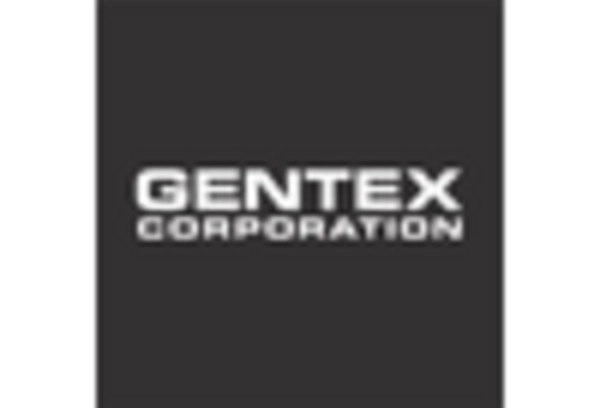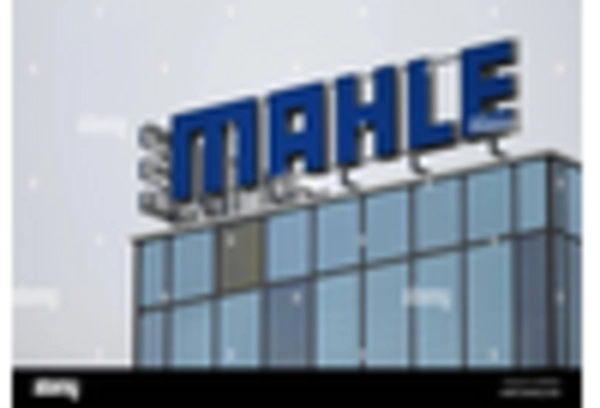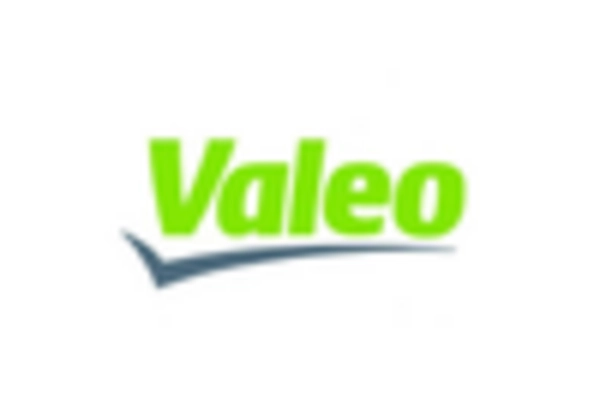Increasing Vehicle Production and Sales
The Automotive Electronic Automotive Defogger System Market is significantly influenced by the increasing production and sales of vehicles worldwide. As automotive manufacturers ramp up production to meet consumer demand, the need for efficient defogging systems becomes more pronounced. Recent statistics indicate that global vehicle production is projected to reach over 100 million units annually by 2026. This surge in production directly correlates with the demand for electronic defogger systems, as automakers seek to enhance vehicle safety and comfort. Consequently, this driver is expected to contribute to the sustained growth of the market as manufacturers prioritize the integration of advanced defogging technologies.
Rising Demand for Advanced Safety Features
The Automotive Electronic Automotive Defogger System Market is experiencing a notable surge in demand for advanced safety features in vehicles. As consumers become increasingly aware of the importance of safety, manufacturers are integrating sophisticated defogging systems that enhance visibility during adverse weather conditions. This trend is supported by data indicating that vehicles equipped with advanced safety technologies are more likely to be favored by consumers. The incorporation of electronic defoggers not only improves driver safety but also aligns with the growing emphasis on overall vehicle performance. Consequently, this driver is likely to propel the market forward as automakers strive to meet consumer expectations and regulatory requirements.
Consumer Preference for Comfort and Convenience
Consumer preferences are shifting towards enhanced comfort and convenience features in vehicles, which is positively impacting the Automotive Electronic Automotive Defogger System Market. As drivers seek a more enjoyable driving experience, the demand for systems that provide quick and efficient defogging solutions is on the rise. This trend is particularly evident in regions with varying climates, where the need for reliable defogging systems is critical. Market analysis indicates that consumers are willing to invest in vehicles that offer superior comfort features, including advanced defogging technologies. This growing preference is likely to drive manufacturers to innovate and improve their offerings, thereby fostering market growth.
Regulatory Standards Promoting Safety Innovations
Regulatory standards are increasingly promoting safety innovations within the Automotive Electronic Automotive Defogger System Market. Governments and regulatory bodies are implementing stringent safety regulations that necessitate the incorporation of advanced defogging systems in new vehicle models. These regulations aim to enhance visibility and reduce accidents caused by fogged-up windows. As a result, manufacturers are compelled to invest in research and development to comply with these standards, leading to the creation of more effective electronic defogging solutions. This regulatory push is expected to drive market growth as companies strive to meet compliance requirements while also appealing to safety-conscious consumers.
Technological Advancements in Automotive Electronics
Technological advancements are playing a pivotal role in shaping the Automotive Electronic Automotive Defogger System Market. Innovations in electronic components and control systems have led to the development of more efficient and effective defogging solutions. For instance, the integration of sensors and automated controls allows for real-time adjustments based on environmental conditions, thereby enhancing performance. Market data suggests that the adoption of such technologies is expected to increase, with a projected growth rate of approximately 7% annually over the next five years. This trend indicates a strong potential for manufacturers to capitalize on emerging technologies, thereby driving market expansion.

















Leave a Comment